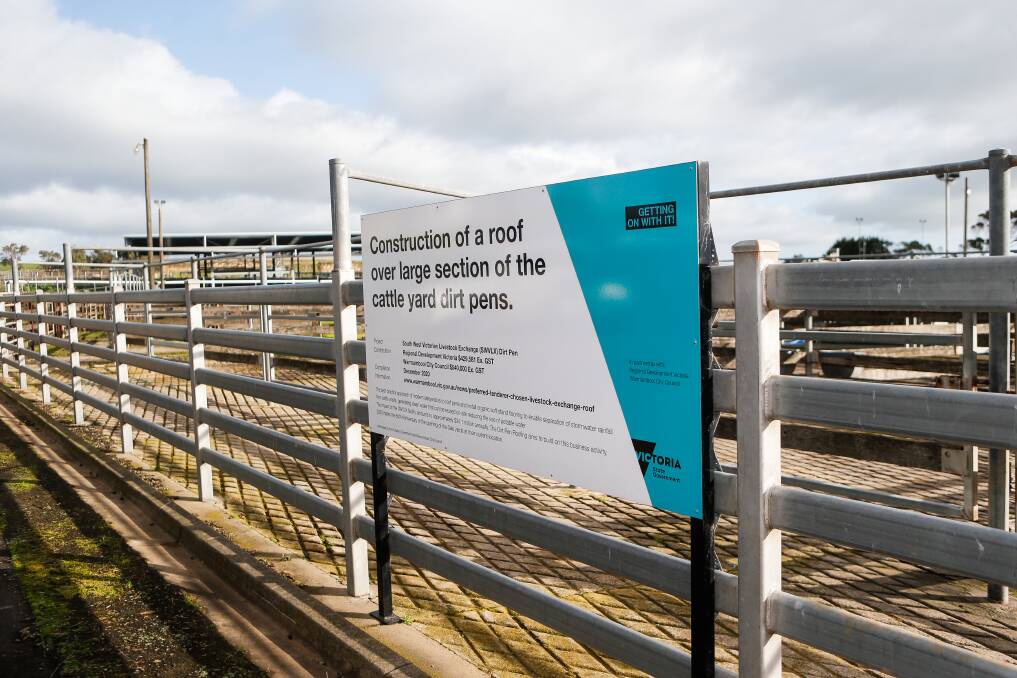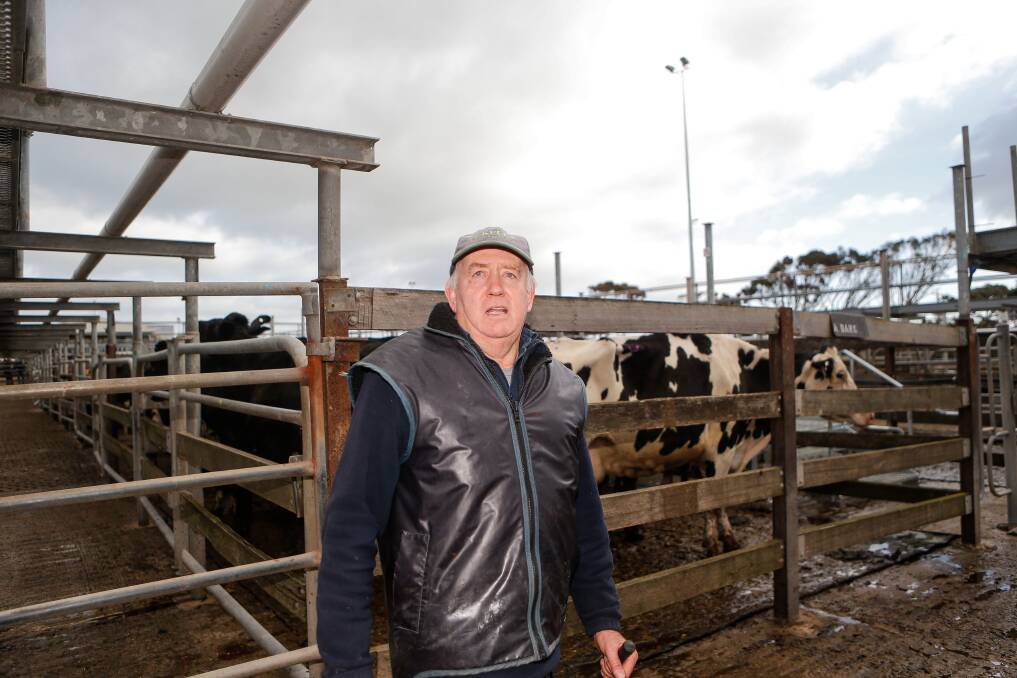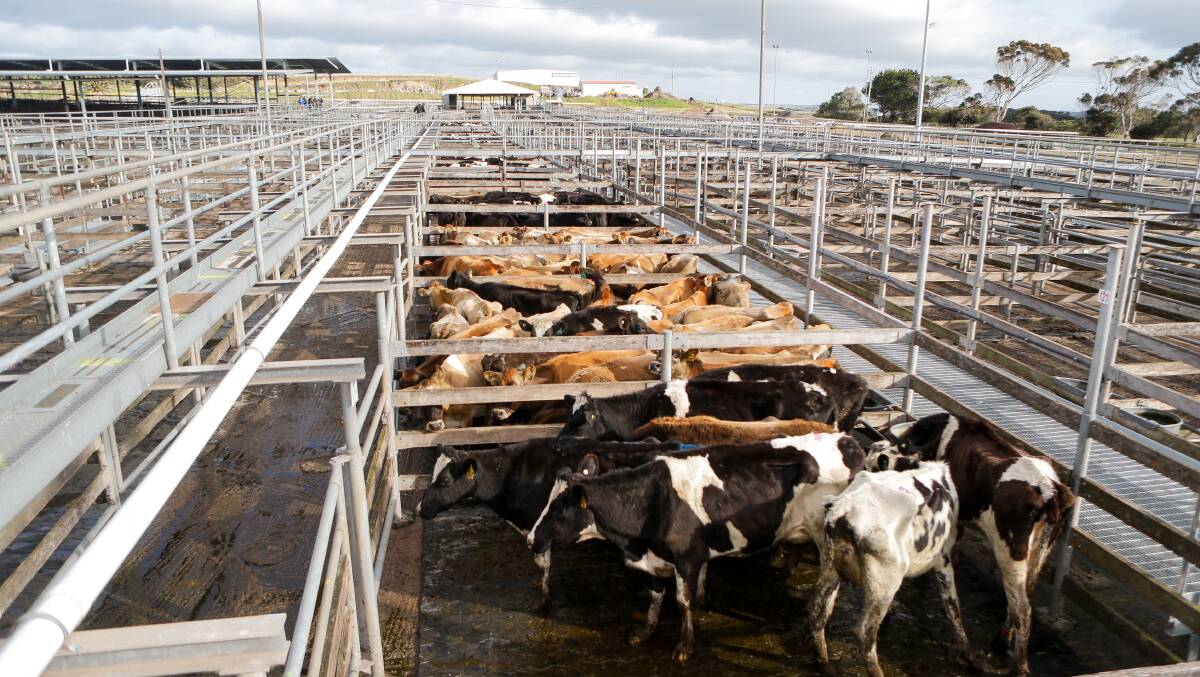
Just three months ago the future of the Warrnambool saleyards seemed assured but almost out of the blue it is now facing closure. What changed?
Subscribe now for unlimited access.
$0/
(min cost $0)
or signup to continue reading
Stock agents and farmers were stunned by the decision this week to put the handbrake on $5.66 million worth of upgrades in what appeared to be a backflip in support for the facility.
Agents had thought the works were a fait accompli because tenders had been called and money allocated in the council budget.
Calling for tenders almost implied the council was on onboard with more works.
But Monday's decision not to award the tender for the upgrades put the saleyards' future in limbo until at least October when councillors are expected to make the final call.
If they decide to close the facility, it would make it one of the major legacies of this current council.
But how did something that seemed so certain change so quickly?
Money had been allocated in both last year's and this year's budgets for upgrades at the ageing saleyards for essential works to address a number of issues raised in Worksafe investigations after a concrete walkway collapsed in October 2020.
When a cow escaped in February when it was being unloaded and went on the run, damaging a number of cars and had to be put down, it sparked another Worksafe investigation.
With the cost of the works needed at the saleyards climbing to as much as $5.66 million, the recommendation to councillors from staff at Monday's meeting was to approve the works - some of which need to be done in order to comply with Worksafe orders.
But four councillors - some of which were vocal in their support of the saleyards just two months ago - changed their minds and their vote effectively put the future of the ageing facility on shaky ground.
In May, Warrnambool Stock Agents Association president Jack Kelly signed a letter from council chief executive officer Peter Schneider which asked for a five-year commitment to the saleyards.
The same month, mayor Vicki Jellie had touted a commitment to the site writing in the Council Plan document that it would invest in the livestock exchange.
But when Cr Debbie Arnott talked about future investment in the saleyards at the May council meeting, her comments sparked a reaction from Cr Ben Blain who took issue with the works being spoken about as if they were a "done deal".
By June when the budget came back to the council for adoption, Cr Jellie's forward in the council plan had been changed to say the council was now reviewing information ahead of making a fully informed decision on budgeted expenditure for the commercial proposal.
Mr Kelly said that signing the letter and the fact the tender had been called for and the officers' recommendation was to approve the works, just consolidated agents' views the saleyards' future was assured.
He said he was "just flabbergasted" by what many described as a backflip at Monday's meeting.
It's not the first time the future of the saleyards has been put on notice with councillors in 2010 voting unanimously to seek an alternative operator.
Mr Kelly said agents, users and businesses rallied back then, packing out the then Performing Arts Centre for the council meeting which resulted in the council deciding to keep the saleyards. "It was a huge turn-up," he said.
In 2014, former councillor Mike Neoh warned in The Standard that "if the council fails to act we may find ourselves with a saleyards entering perhaps a terminal decline".
Cr Blain, who is on the council's saleyards advisory group, said since the major town hall meeting in 2010 there hadn't been any substantial investment.
"If there had been investment, the argument would have been totally different right now," he said. "Now we've hit this crunch point where it needs significant capital investment."
Now we've hit this crunch point where it needs significant capital investment.
- Cr Ben Blain
Former mayor Tony Herbert said he was disappointed that the previous council had been blamed for a lack of investment saying the facility had been a priority and it had approved $1 million in works to upgrade the roof.
"We thought the roof was a good investment and the first of more investment to come," he said. "We didn't look at it and think it was a lame duck." Mr Herbert said agriculture was the biggest employer and exporter in the region.

Stock agents and farmers this week labelled the decision "mindboggling" and called on the council to spend the money.
The $1 million roof upgrade came after the council secured $430,000 in state government funding in June 2020, and recently walkways at the site were upgraded.
Council officers were able to stay within spending limits after replacing condemned concrete walkways with works costing less than half experts' estimated cost.
A WorkSafe ordered review soon after the walkway collapse - described as "like an earthquake" - led to the buyer walkways being condemned, barricaded off, and later demolished.
Reviews found the whole yards were dilapidated with auctioneer catwalks, roofing, loading ramps, rails and fittings in urgent need of replacement.
Hundreds of pages of documents released this week say "council faces imminent legal risks if it chooses not to invest in the facility and to keep operating". "Many parts of the facility had effectively reached the end of their useful life", the report said.
A CSE Group consulting engineer report, included in the agenda, said almost all platforms on the site were subject to degradation and "could collapse at any moment". "The roof structures over the platforms are also subject to possible failure," it said.
A Zinc Cost Management report estimated the cost of replacing the walkways alone was $512,000. This most recent work was delivered at a cost of $240,000 which was allocated in 2021-22 budget.
Mr Schneider said recent building activity at the saleyards was rectification work comprising the replacement of walkways.

"Council replaced only the highest-use walkways that ensured safe and compliant yards," he said. "This work completes the requirements of WorkSafe orders from November 2020. "While council operates a saleyards, it is responsible for ensuring the yards remain safe and functional."
Cr Blain told Monday's meeting that having the land as rateable property would exceed the current saleyards profits which were about $210,000 and bring in $1.19 million in user fees.
Real estate agents value the council-owned site at between $8 million and $15 million - funds that could help projects on council's wish-list such as a new $40 million art gallery and $16.6 million Brierly community hub and an AquaZone revamp.
But for farmers, the loss of the saleyards is more than a commercial operation - it is their "men's shed" and meeting place.
The saleyards have been estimated to bring in $35 million to the city. A 2008 report, included in the newly released documents, found the loss of saleyards accounted for less than one per cent of the city's $3 billion economy.
"The study indicated that an annual reduction of $13.7 million in business turnover in the local economy could adversely impact some businesses, particularly those located along Caramut Road in close proximity to the current saleyards site," the report says.
The saleyards has a long history in Warrnambool dating back more than a century with the original one on the site of the Lighthouse Theatre before it moved to Swan Reserve in 1883. They were moved from the heart of the city to Caramut Road in 1970.
Monday's vote has been seen as what could be the first step in the imminent closure of the yards, but farmers and agents have voted to fight to save their saleyards.

